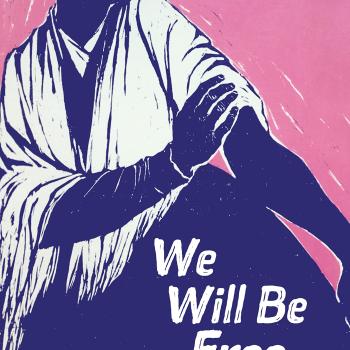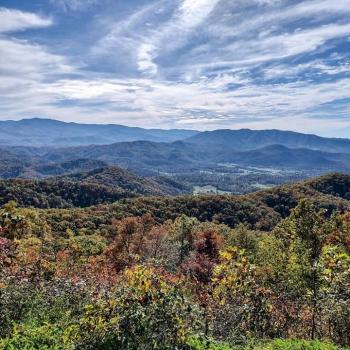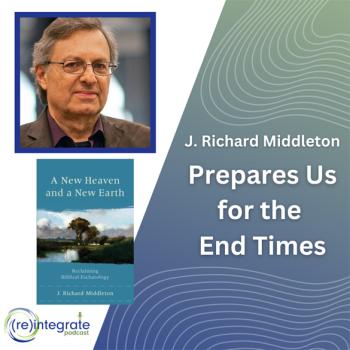
At the most recent meeting of the Southern Baptist Convention in New Orleans, Louisiana, the nation’s largest evangelical denomination upheld its policy of not ordaining women as pastors.
After voting to finalize the expulsion of churches with female pastors, Southern Baptists voted to further expand restrictions on women in church leadership, potentially opening up hundreds of new churches to investigation and expulsions.
The SBC's policies state, "While both men and women are gifted for service in the church, the office of pastor is limited to men as qualified by Scripture."
As gender studies professor Susan M. Shaw wrote for The Conversation, such “battles over women in ordained ministry in the SBC are not new.” The matter of women’s roles as preachers, teachers and leaders at large have been debated by Southern Baptists since the convention’s founding in 1845.
One of the points used to undergird the argument to exclude women from ordination is a doctrine known as the “orders of creation” (or “order of creation”), which affirms God’s role in establishing social domains in the family, church and society through the very “order” of creation of the world, as recorded in the book of Genesis.
In 1984, as fundamentalists gained greater control, the SBC passed a resolution against women’s ordination. The resolution said that women were excluded from ordained ministry to “preserve a submission God requires because the man was first in creation and the woman was first in the Edenic fall.”
Indeed, the discourse around origins can be powerful.
In this post from “What You Missed Without Religion Class,” I explore the conflict over origins and show how dealing with the genesis of the universe isn’t necessarily about what happened (or not) in the past, but very much about ordering life, traditions and communities in the present.
Of αιτία and the κόσμος.
For word nerds, etiology – when used within the realm of religious studies – refers to a quasi-historical or mythical description of origins. Drawn from the Greek term αιτία, these stories have to do with the cause or why of something — that which is responsible for a present condition, the reason for today’s state of affairs.
One type of etiology is a cosmogony, which is a myth on the origins of the cosmos (κόσμος) – a story that tells us how the grandest system of them all came into being in the first place.
When I first started studying religion, I was fascinated with cosmogonies.
I devoured stories like that of Rangi the Sky-father and Papa, the Earth-mother from the annals of Maōri teachings (akoranga), perused narratives about humanity’s creation from reeds (uthlanga/umlanga), as told among the Nguni peoples of Southern Africa (Zulu, Xhosa, Swazi), and dove deep into Ancient Near Eastern origin myths like the “Enuma Elish,” the Hindu “hymn of creation” from the Rig Veda, and Maya myths like the Popol Vuh.
Emerging out of a Christian household, my original intentions were to compare these cosmogonies to that with which I was raised. I wondered what different traditions had to say about the origin of everything that ever existed and what these stories had to say about the relationship between humans and the cosmos.
Why origin stories matter.
But my early investigations were plagued by a fatal problem: I was searching for an essence, archetype, or sacred thread that would link these various stories into one grand narrative or speak to some fundamental truth about how the Divine is related to life in the world today.
Today, some two decades after I first heard the story of the Rainbow Bridge — a Chumash narrative about how people came to the mainland from Limuw (Santa Cruz) Island after being created from the seeds of a magic plant by Hutash, the Earth-mother — I’ve come to view these texts from a very different perspective than what my previous lens could offer.
These texts matter, but less because of what they have to say about the essential nature of things (which I was in search of) or whether or not they are historically verifiable.
As a point of fact, the interpretation of creation myths has changed over time. Take, for example, how the “Creation story” in Genesis has been seen as everything from a poem to a quasi-scientific textbook concerning earth’s origins and used as a prooftext to support views ranging from “young Earth” creationism to evolutionary creation, “old Earth” creationism to intelligent design.
Instead, cosmogonies and etiologies matter because they provide a window into how communities, or the students and scholars who study them, utilize such stories to situate themselves in the world and in relation to others.
The search for origins always comes from a specific place, interested in defining truth from its own position. And, in doing so, establishing the otherness between “us” (placed perfectly in the perspective of eternal history) and “them” (hopelessly askew in the etiology of things).
As the SBC example shows, these accounts use some narrative from the past (i.e., the world’s creation, a nation’s origins, the conception of a community, or the genesis of a particular place or geological formation) to authorize a position in the present.
In other words, these origin discourses are not actually about how something came into being, but instead about legitimizing or benefitting the position of the one who is telling or hearing the tale today.
Comparing cosmogonies, evaluating etiologies.
There are innumerable etiologies floating around the world. The student of religion is welcome to read and study them. In fact, it is critical that the student of religion pays attention to origin stories. But not for the reasons we might think.
Rather, we should approach them as just-so stories that authenticate contemporary discourses or positions of power in the fertile soil of a past beyond our reach and understanding.
In the case of the SBC, that means reminding women that they come after men. And, further, because of that “fact,” they are not meant to serve as pastors.
The student of religion’s task in studying cosmogonies like that is to make sense of alternative orders of reality and how they shape social realities in contemporary contexts.
Above all, as we compare cosmogonies and evaluate etiologies, we should be careful to approach them as very human attempts at producing a comprehensive vision of ultimate importance. Even describing them carries the risk of uncritically reproducing them and therefore, legitimizing them.
We must always remind ourselves that as these stories are told and retold, studied and deciphered, they are meant to not only remind hearers of their place in the cosmos, but to form persons for a particular kind of religious, social, political, or economic life.
And moreover, a humble student of religion will remember that’s as true of our evaluations as it is of the origin stories we study.
7/13/2023 5:28:45 AM





